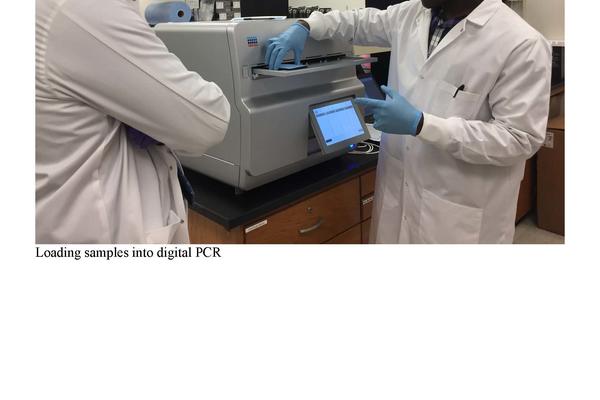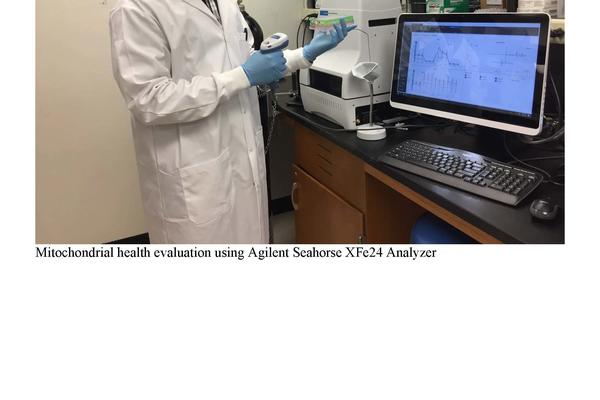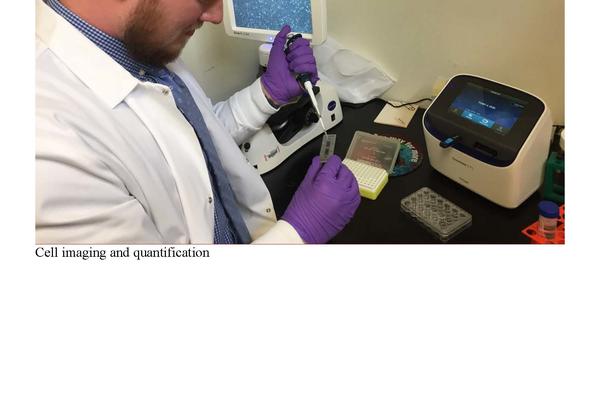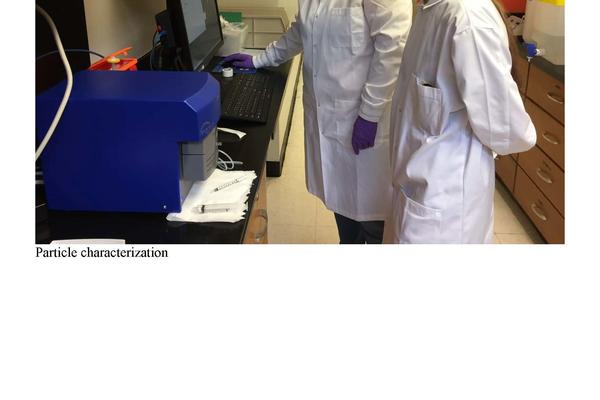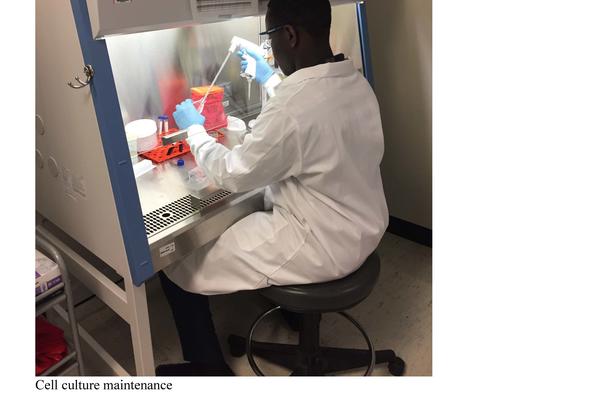
Saber M. Hussain, Ph.D., ATS
Research INTERESTS
I am fortunate to be associated with both Wright State University (WSU) and the US Air Force Research Laboratory (AFRL) where I was given the opportunity to direct a multidisciplinary research team conducting state of the art research. The ultimate goal is to establish a network of research and engineering capabilities to directly address AF challenges. I enjoy creating a collaborative research experience between students, faculty, and government to solve challenging problems which are the focus of the AFRL in Warfighter health, performance, and sustainment. I particularly enjoy mentoring students and building research collaborations with WSU and other academic partners that will accelerate student participation and diversity.
Main Research thrusts
- Assessing the Impact of Operational Stressors on Cellular Functions
- Understanding the Effects of Inhaled Chemical & Particle Mixtures on Lung Surfactant (LS) Function: Linkage to Adverse Health Effects
- Utilizing the Mitochondria as a Diagnostic and Predictive Tool to Identify Cellular Susceptibilities
- Advance In Vitro Dermal Models: Uncovering Mechanisms of Key Events in the Sensitization Process
- Harnessing Artificial Intelligence based in silico Modeling for Rapid Hazard Identification of AF Related Contaminants
About AFRL
The U.S. Air Force Research Laboratory (AFRL) leads the discovery, development, and integration of affordable warfighting technologies for America's air, space, and cyberspace forces. AFRL is a full-spectrum laboratory, responsible for planning and executing the Air Force's science and technology program. AFRL leads a worldwide government, industry, and academic partnership in the discovery, development, and delivery of a wide range of revolutionary technologies. The laboratory provides leading-edge warfighting capabilities keeping our air, space, and cyberspace forces the world's best. The 711 Human Performance Wing advances human performance in air, space, and cyberspace through research, education, and consultation, accomplished through the synergies created by the wing’s two distinct but complementary entities: Airman Systems Directorate and U.S. Air
Force School of Aerospace Medicine.
- For more information about the Air Force Research Laboratory, visit Air Force Research Lab at https://www.wpafb.af.mil/afrl/
ABOUT Boonshoft School of Medicine’s Department of Pharmacology and Toxicology
Recently WSU and AFRL have partnered to explore and better understand the effects different stressors have on a pilot’s well-being and how mission readiness could be impacted. This partnership granted AFRL access to laboratory space within the Boonshoft School of Medicine’s Department of Pharmacology and Toxicology. Through this connection, WSU and AFRL have signed a Cooperative Research and Development Agreement (CRADA) to advance the development of a multi-organ system model that will identify the impact of stressors on pilots during missions. Stressors can include physical exertion, high temperatures, G-forces, pressure changes, low oxygen levels, and exposure to chemical contaminants. These stressors can lead to alterations on a molecular and biochemical level in the body, impacting cognition, vision, hearing, fatigue, and potentially hindering performance.
For more information please visit https://medicine.wright.edu/pharmacology-and-toxicology
CRADA AGREEMENT WITH WSU & AFRL
The CRADA will allow AFRL access to the Department of Pharmacology and Toxicology Proteomics and Preclinical Pharmacology labs and the Pharmacology Translational Unit. The Pharmacology Translational Unit participates in clinical research studies and trials, determining the efficacy of a test or treatment to improve the patients’ quality of life while being safe. Wright State, through participation in the CRADA, will gain a new avenue through which to offer enhanced professional development opportunities to students, as well as the potential to submit future joint proposals with AFRL.
- https://www.daytondailynews.com/local/research-partnership-to-investigat...
- https://www.daytondailynews.com/news/pact-sets-stage-for-new-wright-stat...
- https://webapp2.wright.edu/web1/newsroom/2020/11/03/air-force-to-utilize-boonshoft-school-of-medicine-laboratories-for-research-initiatives/
- https://www.wpafb.af.mil/News/Article-Display/Article/2342265/afrl-academic-research-partnership-to-investigate-operational-stressors-on-airm/
QUOTATIONS ON EXCELLENCE OF RESEARCH FROM ABOVE LINKS
“This collaboration will provide a forum for Wright State University students to improve their analytic skills and capabilities and will present our students with real-world research activities and internships with the Air Force,” said Jeffrey Travers, M.D., Ph.D., professor and chair of the Department of Pharmacology and Toxicology. “Our graduate students will benefit greatly from the close working relationship with, and training provided by, Dr. Hussain and the AFRL team.”
Wright State and Wright-Patterson Air Force Base have a longstanding relationship. This partnership will be a beneficial enrichment of that relationship and fits into Wright-Patterson’s push to connect to outside innovators in their strategies.
“I think these collaborations have more promise than ever, and all involved are excited to see that future unfold,” said Darrin Ott, Ph.D., AFRL 711th Human Performance Wing Aerospace and Operational Medicine Core Technical Competency lead.
The collaboration is a win on many levels and produces an infrastructure for WPAFB Wright State that will add to the research and educational missions of both organizations.
“This partnership not only enriches our scientific and technical expertise but also allows us to work with student scientists and engineers who may become part of our future workforce, all key tenants of the Air Force 2030 Science and Technology Strategy,” Hussain said.
Detailed research areas
The following are the specific research foci:
Impact of Operational Stressors on Cellular Functions:
- Evaluate the impact of stressors on lung surfactants in a simulated operational stress environment
- Measure interactions of operational stressors on mitochondrial structure & function
- Generate a database to build/refine human performance biological modeling
- Establish stress simulation exposure models & build/refine human performance biological modeling- Predictive tool to analyze respiratory & systemic health effects of unknown new inhaled chemicals
Effects of Inhaled Chemical & Particle Mixtures on Lung Surfactant (LS) Function: Linkage to Adverse Health Effects:
- The main objective of this study is to develop a framework for the rapid assessment and understanding of personnel exposures to military-relevant chemicals and particles and their induced effects on lung surfactant (LS) function.
- The overarching aim of this research is to improve the rapid assessment of hazardous exposures to military personnel using relevant substances and environmental conditions.
Mitochondria as a Diagnostic and Predictive Tool to Identify Cellular Susceptibilities:
- Airmen constantly endure an evolving spectrum of operational stress scenarios that are vital to the continued success and achievement of the Air Force mission directives. The overarching aim of this research is to improve rapid assessment of operationally relevant exposure to stress by delineating structural and functional dynamics of mitochondria.
- Mitochondria, a sub-cellular organelle with its own genome, produce the energy required for life and generate signals that enable organisms to adapt to high levels of stress. The overall goal of this project is to identify alterations in the unique structure/function relationship of mitochondria within novel 3D cell cultures in response to operationally relevant stress factors.
Advanced In Vitro Dermal Models: Mechanisms of Key Events of the Sensitization Process:
- Dermal model containing both skin and immune cells to replicate the four key events of the sensitization process to study the responses from exposures to common sensitizers and predict the potency of unknown chemicals.
Artificial Intelligence Based in silico Modeling for Rapid Hazard Identification of AF Related Contaminants:
- Predicting which contaminants, such as particles, metals, or chemicals will affect the performance of airmen in a high-stress environment is critical for the success of missions. Access to rich toxicological data derived from multiple in-vitro models allows us to build machine learning models to hazard identification accurately.
Operationally Relevant Molecular Biosignatures Discovery & Evaluation: In Vitro Ocular Model:
- Development of complex ocular 3d model as a representative of the ocular surface and tear secretory system. The model will be used to identify molecular signatures of operationally relevant stress in non-invasive biofluids (tears) to predict physiological state and performance.
Investigation of Biophotonic Cellular Communication:
-
Challenges include identifying endogenous receptor systems that detect non-molecular stimuli and trigger responses, distinguishing the effects of biophoton signaling from other mediators of signaling, and overcoming unfavorable signal-to-noise ratios in natural conditions. Cellular communication through weak photon emission endogenously produced by mammalian cells that might serve as non-invasive detection and monitoring of stress, toxicological effects, or pathological conditions.
PUBLICATIONS
Please see Dr. Hussain’s Google Scholar page for a comprehensive list of publications: http://scholar.google.com/citations?user=jy3D9AoAAAAJ&hl=en
For Prospective Students and Post-docs
- Are you interested in pursuing an advanced degree in biology, chemistry, or engineering with specific emphasis on nanotechology?
- Are you a U.S. citizen or do you have a permanent residency?
- Do you enjoy working both on individual and group projects?
- Are you highly motivated and self-directed?
- Would you be willing to work weekends if experiments demand?
- Do you have the motivation to publish your findings in high IF journals?
If you answered yes to all of the above questions, you have the potential to excel in Dr. Saber Hussain’s research group and should send your CV to saber.hussain@wright.edu. Please include your name, major, phone number, email address, education including relevant courses taken, GPA, research experience, extracurricular activities, a brief paragraph explaining why you are interested in pursuing research and your interest, and a list of scientific publications and presentations.
Master's, Doctoral and Postdoctoral Research Opportunities
- Repperger Research Intern Program - https://orise.orau.gov/afrl/default.html
- Wright Scholars - https://www.afrl.af.mil/About-Us/Fact-Sheets/Fact-Sheet-Display/Article/2329031/wright-scholar-research-assistant-program/
- LEGACY - http://wpafbstem.com/pages/legacy.html
Currently positions available:
- AFRL-711HPW-2021-0014: Effects of Inhaled Chemical & Particle Mixtures on Lung Surfactants
https://zintellect.com/Opportunity/Details/AFRL-711HPW-2021-0014
- AFRL-711HPW-2021-0019: Mitochondrial Health & Organ level effects through microscopic imaging & molecular Analysis
https://www.zintellect.com/Opportunity/Details/AFRL-711HPW-2021-0019
- AFRL-711HPW-2021-0015: Molecular Biosignatures Internship
https://www.zintellect.com/Opportunity/Details/AFRL-711HPW-2021-0015
==========================================================================
https://www.zintellect.com/Opportunity/Details/AFRL-711HPW-2021-0013R (bachelor & master)
https://www.zintellect.com/Opportunity/Details/AFRL-711HPW-2021-0013RR (postdoctoral)
https://www.zintellect.com/Opportunity/Details/AFRL-711HPW-2021-0014R (bachelor & master)
https://www.zintellect.com/Opportunity/Details/AFRL-711HPW-2021-0014RR (postdoctoral)
https://www.zintellect.com/Opportunity/Details/AFRL-711HPW-2021-0015R (bachelor & master)
https://www.zintellect.com/Opportunity/Details/AFRL-711HPW-2021-0015RR (postdoctoral)
https://www.zintellect.com/Opportunity/Details/AFRL-711HPW-2021-0019R (bachelor & master)
https://www.zintellect.com/Opportunity/Details/AFRL-711HPW-2021-0019RR (postdoctoral)
=================================================================================
https://ues.hrmdirect.com/employment/job-opening.php?req=1662664&&cust_sort1=-1&&nohd#job
Education History
Ph.D., Biology, Indian Institute of Chemical Technology, Osmania University, Hyderabad, India, 1991


